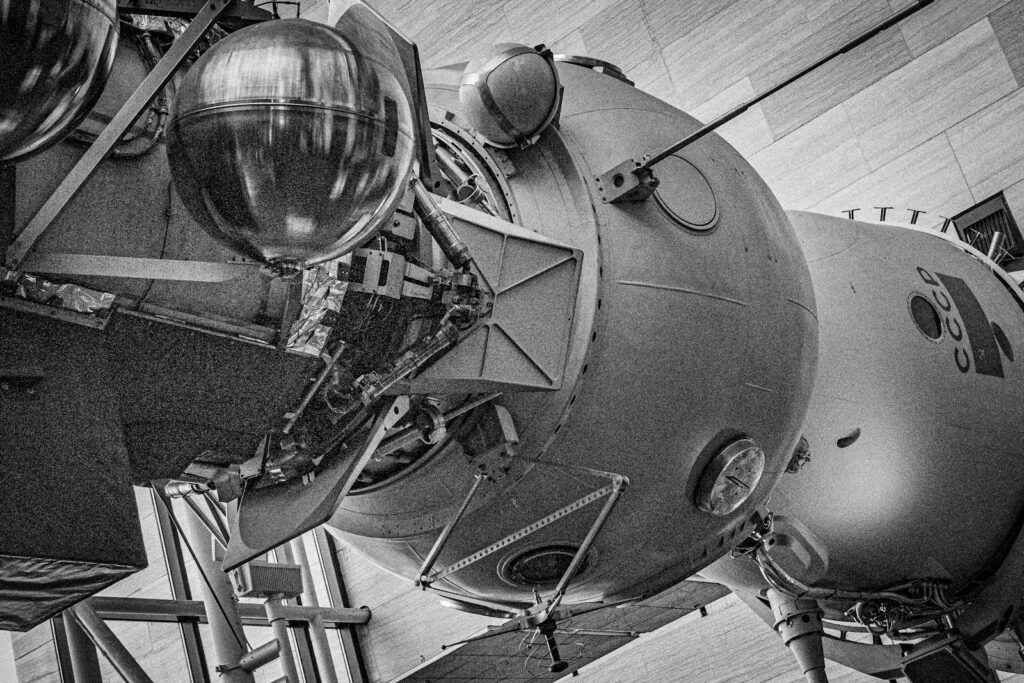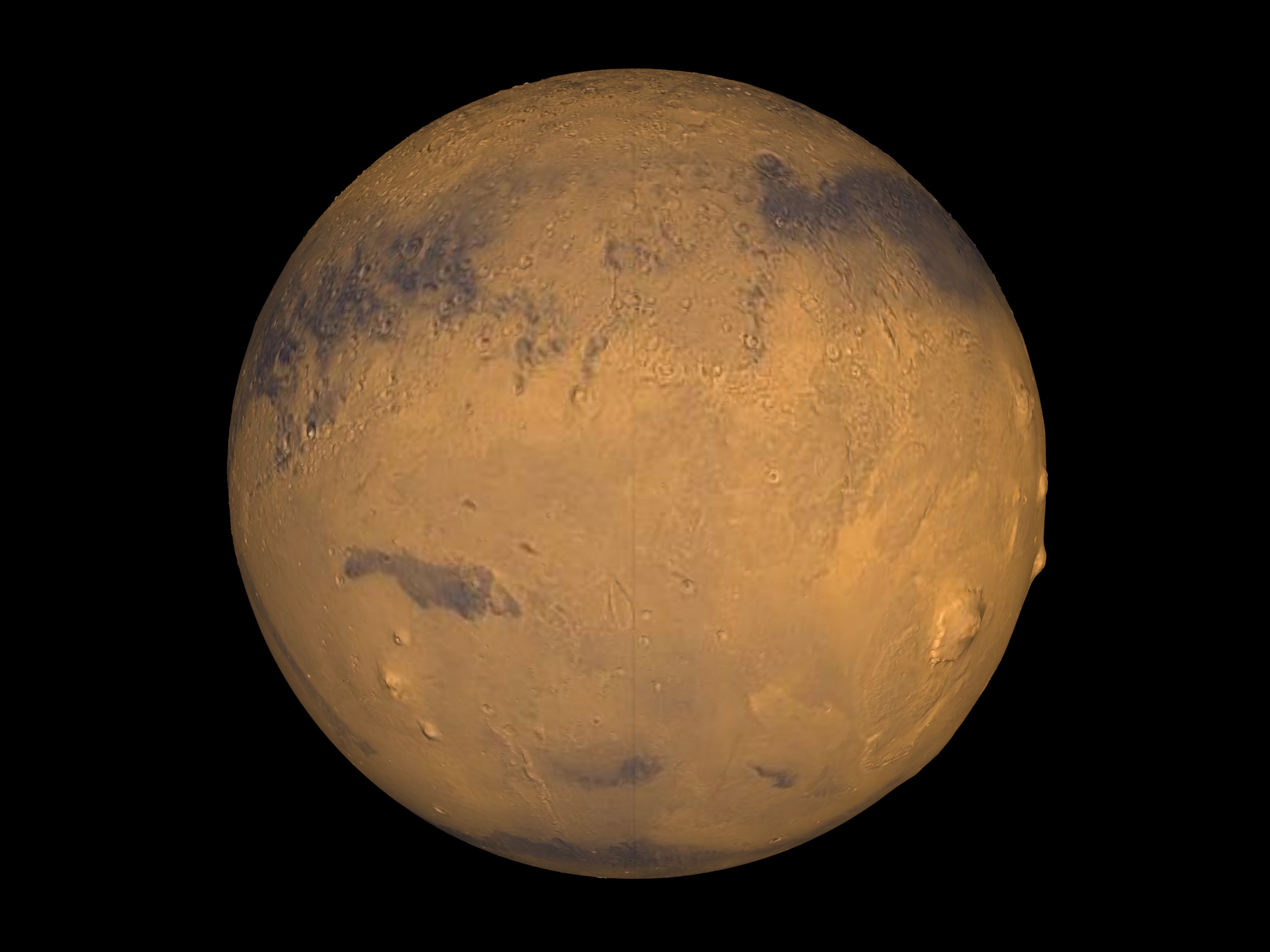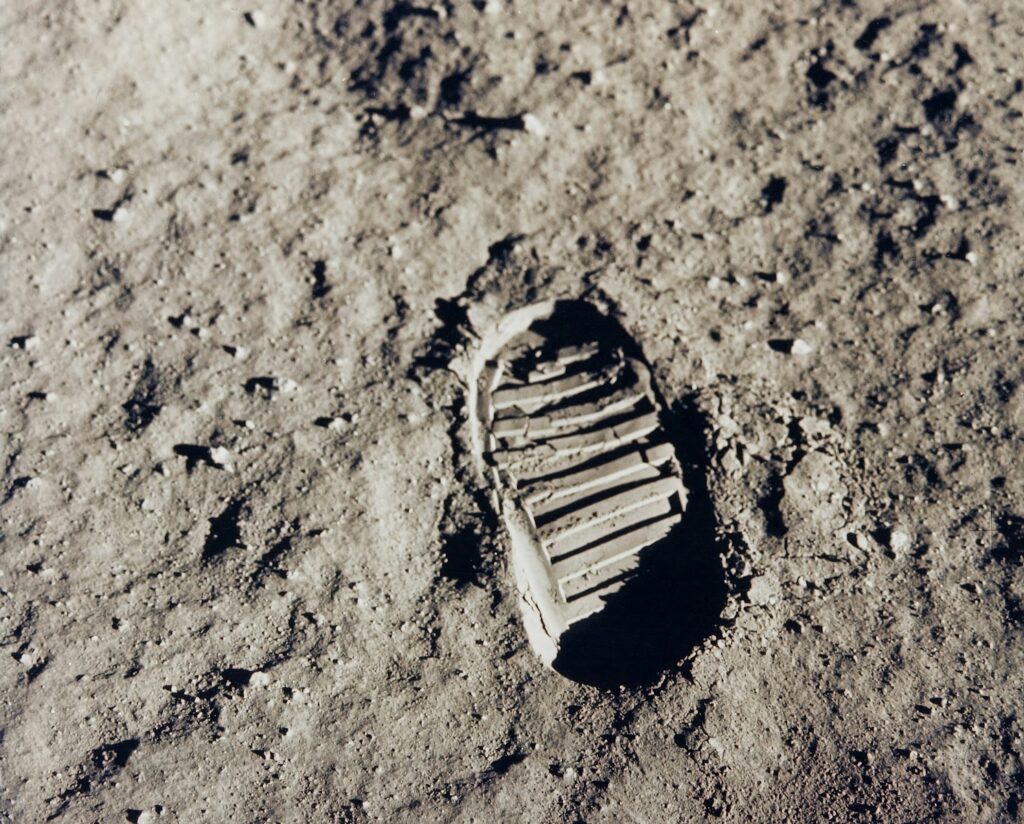
The global race to explore and dominate space has entered an unprecedented, intensely competitive phase, with China emerging as a formidable challenger to the United States’ historical leadership. As NASA grapples with the specter of budget reductions that some officials warn could lead to an “extinction level” event for U.S. space science and exploration, Beijing is boldly revealing a meticulously planned, expansive space program designed not just to catch up, but to surpass. This strategic shift is prompting serious contemplation about whether the United States could, for the first time since the 1960s, cede its preeminent position in deep space exploration to China.
This evolving landscape is not merely a theoretical exercise; it is underscored by tangible progress and a declared intent from China to become the world’s preeminent space power. The nation’s “National Space Science Medium and Long-Term Development Plan” explicitly outlines Beijing’s ambition to position China at the “international forefront” of spacefaring nations. With a methodical approach encompassing everything from lunar bases to interplanetary missions and advanced satellite networks, China is demonstrating a sustained commitment that is reshaping the competitive terrain of space.
Indeed, a recent report from the Commercial Space Federation, a lobbying group for the privatized space industry, paints a stark picture: China’s space program is experiencing a meteoric rise, poised to challenge U.S. leadership and commercial strength. The report warns that “China’s decade of steady progress in space is now reshaping the competitive landscape and may soon challenge US leadership and commercial strength.” This comprehensive overview delves into the key pillars of China’s ambitious space program, examining the strategic blueprints, foundational institutions, and significant missions that define its trajectory toward cosmic leadership.

1. **China’s National Space Science Medium and Long-Term Development Plan: A Strategic Blueprint**In a definitive declaration of its cosmic ambitions, Beijing unveiled its first “National Space Science Medium and Long-Term Development Plan” in October. This strategic blueprint serves as the overarching framework for developing China’s space-based science and technology sector, with the explicit objective of achieving dominance in the space domain. It represents a unified, national-level strategy that builds upon decades of policy support, funding, and agency-specific development goals, providing a clear roadmap for future endeavors.
The plan transcends mere astronomical pursuits, prioritizing several critical objectives. Foremost among these is the establishment of a permanently manned lunar research station, signaling China’s intent to not only reach the Moon but to sustain a presence there. Additionally, it emphasizes the exploitation of lunar resources, recognizing the strategic value of materials like helium-3. Ultimately, the plan culminates in a manned mission to Mars, underscoring the breadth and depth of China’s long-term vision for human expansion into the solar system.
This comprehensive strategy is structured into three distinct phases. The initial phase, extending through 2027, is dedicated to solidifying foundational technological capabilities and ensuring mission success across various fields, including further unmanned lunar exploration and developing core competencies for future Mars missions. This period focuses on building robust technical bedrock essential for subsequent, more complex operations. The second phase, spanning from 2028 to 2035, envisions China leveraging these advancements to land its taikonauts on the Moon, establish a permanent base, and execute intricate manned missions to Mars. This marks a significant escalation in human spaceflight capabilities.
The final phase, projected to conclude in 2050, foresees China dispatching manned missions to other celestial bodies beyond Mars, firmly establishing itself as the preeminent center of space science innovation globally. This long-range outlook, with its clear, phased objectives, illustrates a disciplined and determined approach to achieving space supremacy. The “unmistakable trend line,” as noted in a report, indicates that “China is not only racing to catch up — it is setting pace, deregulating, and, at times, redefining what leadership looks like on and above Earth.”

2. **The Deep Space Exploration Laboratory: Spearheading Interplanetary Ambitions**Recognizing the need for a focused and robust approach to exploring the Solar System, China established a new entity called the “Deep Space Exploration Laboratory” three years ago. This dedicated institution was created to strengthen the country’s capabilities in pushing the boundaries of cosmic discovery. Located in eastern China, not far from Shanghai, the laboratory represents a significant partnership between China’s national space agency, the China National Space Administration (CNSA), and a local public college, the University of Science and Technology of China. This collaboration highlights a concerted effort to integrate academic research with national strategic objectives.
While much about the laboratory’s internal operations remains undisclosed outside of China, its recent revelations about ambitious plans for Solar System exploration have drawn global attention. These plans are particularly noteworthy for their scope, which includes not only the inner planets but also the more distant outer planets. The establishment of such a specialized entity underscores China’s methodical investment in the institutional infrastructure necessary to support its long-term space aspirations. It is a clear signal that China is not merely pursuing isolated missions but building a comprehensive, sustained program of deep space research.
As part of a recent presentation, Chinese officials publicly shared specific dates for future missions stemming from the laboratory’s initiatives. These forthcoming missions, which include exploration of distant planetary bodies, indicate a commitment to advancing planetary research and deep-space exploration significantly. The laboratory’s existence and its stated goals reinforce the notion that China is actively working to establish itself as a leader in the modern space race, pushing the frontiers of human knowledge about our solar neighborhood.

3. **China’s Human Lunar Program and the International Lunar Research Station (ILRS): A New Era of Lunar Presence**
China’s ambitions extend significantly to the Moon, with plans that aim for a sustained human presence and the establishment of an international research outpost. The “National Space Science Medium and Long-Term Development Plan” explicitly prioritizes the establishment of a permanently manned lunar research station. This vision is backed by concrete timelines, with China seeking to land its own taikonauts on the surface of the Moon by 2030, marking a major step toward expanding lunar exploration capabilities.
Beyond initial landings, China is committed to establishing a fully functional base on the Moon’s South Pole by 2035, with further expansion planned by 2045. This systematic approach includes preliminary groundwork for the lunar base, slated to commence with the Chang’e 8 mission in 2028, which will focus on crucial site selection. Such endeavors highlight China’s determination not only to reach the Moon but to secure a long-term foothold and leverage its strategic advantages.
The Moon holds immense strategic importance for China. Scientists believe it likely contains large reserves of helium-3, a rare isotope considered ideal for achieving clean and safe nuclear fusion reactors—a potential game-changer for terrestrial energy. Furthermore, the Moon is seen as an ideal testing ground for developing deep-space exploration and habitation technologies. With a relatively short travel time of only three days, it allows for real, on-the-ground implementation of building techniques for permanent settlement beyond Earth, while remaining close enough to enable a rapid response in case of an emergency.
Crucially, the Moon’s ample frozen water ice and lack of atmosphere make it an ideal staging and resupply point for missions to Mars or asteroid belt mining, significantly reducing payload constraints for deeper space ventures. Chinese Academy of Sciences member Ouyang Ziyuan has articulated this vision, describing the ideal Moon base as a “transit station” for humans to continue out into the deeper solar system. This comprehensive strategy, combining resource utilization, technological development, and deep-space staging, positions China as a leading player in the future of lunar exploration.
To amplify its lunar ambitions, China has also championed the International Lunar Research Station (ILRS) project, fostering global partnerships in lunar exploration. This initiative aims for a functional base on the Moon’s South Pole by 2035, with further expansion by 2045. The project has garnered significant international interest, with the number of countries that have signed on nearly doubling since its announcement last April. As of 2023, over 30 nations have expressed interest in partnering with China on its space initiatives, signaling strong international interest and validating China’s approach to collaborative space science. This cooperative framework not only drives scientific progress but also strengthens international technological exchanges, projecting China’s soft power on a global scale.

4. **Building the Tiangong: China’s Permanent Space Station and Orbital Presence**While global attention often remains fixated on the International Space Station (ISS), China has successfully and methodically completed its own permanent outpost in low-Earth orbit: the Tiangong space station. Completed in late 2022, and referred to as fully completed in 2023, the three-module station is now fully operational, regularly hosting astronauts for long-duration missions. The Shenzhou-16 crew, for instance, has been conducting over 100 scientific experiments, including critical microgravity research, showcasing the station’s robust scientific capabilities.
The Tiangong station is not merely a replica of its international counterpart; it represents a modern, advanced platform tailored to China’s specific scientific and strategic needs. Unlike the aging ISS, which is slated for decommissioning at the end of this decade, Tiangong is new, equipped with advanced life support systems, and designed for long-term operations. This strategic timing means that once the ISS is retired without a direct replacement from NASA, the Tiangong will become the only major state-run space station in operation, granting China a unique position in Earth orbit.
The station has rapidly become a symbol of national pride and a focal point for China’s human spaceflight program. Furthermore, it is attracting international partners, particularly those countries that have been excluded from participating in the ISS project. Plans involve expanding the station with additional modules, which will further enhance its research capabilities and allow for a wider range of scientific studies in orbit. This ongoing development underscores China’s commitment to a sustained, robust human presence in space.
The existence and expansion of the Tiangong Space Station are pivotal indicators of China’s growing influence. It demonstrates China’s capability to independently construct and operate a sophisticated orbital laboratory, providing invaluable experience for future human spaceflight endeavors. By offering an alternative hub for global space collaboration, especially to nations not involved with the ISS, China is effectively building an influential platform that reinforces its role as a key player in orbital science and international space partnerships.

5. **Mars Exploration: From Tianwen-1 to Ambitious Manned Missions**China’s celestial ambitions extend prominently to the Red Planet, with a multi-phase plan for Mars exploration that includes robotic missions and ultimately, human landings. The nation first set its sights on Mars in 2020 with the groundbreaking launch of the Tianwen-1 probe. This mission was exceptional in its scope, successfully sending not only an orbiter but also a lander and a small rover, Zhurong, to Mars. The Zhurong rover subsequently operated for about a year, traveling nearly 2 kilometers and analyzing the planet’s surface and atmosphere. This achievement was particularly significant as no country besides the United States had ever softly landed a spacecraft on Mars and had it survive for more than a handful of minutes on its very first attempt.
The Tianwen-1 mission laid crucial groundwork for an eventual crewed landing by meticulously scanning Mars for water ice in orbit, checking soil conditions, and landing the rover at a site thought to contain large underground reserves of water. These preliminary investigations are vital for understanding the Martian environment and identifying potential resources for future human missions. The extended operations for Tianwen-1, confirmed by a Chinese news agency, ensure further data collection for Mars’s topography and climate studies, deepening China’s understanding of the planet.
Building on this success, the planned Tianwen-3 mission, with an anticipated launch date of 2028, will mark a critical juncture in the second phase of China’s Space Development Plan. If successful, Tianwen-3 is designed to collect samples of Martian soil and rocks and return them to Earth—a complex and challenging feat. This mission is projected to return Martian soil samples two years ahead of NASA’s projected timeline, which would provide invaluable scientific data and, crucially, demonstrate the capability to safely return a mission from Mars, a prerequisite for any future manned endeavor. Experts have noted that it is “highly unlikely the United States will beat China’s projected timeline” for Mars sample return.
Ultimately, China is pursuing a sustained human presence on Mars, with its Space Development Plan outlining a manned mission to the Red Planet by 2031, contingent upon the success of Tianwen-3. In preparation for this audacious goal, China is already experimenting with Martian regolith-based construction materials, demonstrating a forward-thinking approach to developing the technologies required for long-duration human habitation. This comprehensive and aggressive approach to Mars exploration positions China as a leading contender in the race to unlock the secrets of our planetary neighbor.
6. **Methodical Lunar Sample Return Missions: The Success of the Chang’e Series**China’s lunar exploration program, dating back to 2007, has been characterized by a methodical and increasingly sophisticated series of robotic missions, collectively known as the Chang’e program. This sustained commitment has yielded a string of successes, accumulating critical mission experience and showcasing China’s growing capabilities in space. These achievements have brought significant credibility to a government that views space exploration as a projection of its soft power, both domestically and internationally.
A significant milestone was the Chang’e-5 mission, which successfully retrieved 1.731 kilograms of lunar samples in 2020, providing critical data for geological studies of the Moon. This mission demonstrated China’s ability to execute complex sample return operations, a foundational technology for further lunar resource utilization and scientific investigation. The data and samples returned are invaluable for illuminating the Moon’s geological activities and the effects of its thin atmosphere on surface conditions.
The most recent and arguably most impressive achievement in this series is the Chang’e-6 mission, which successfully repeated the novel feat of landing on the Moon’s far side in June 2024. This mission returned to Earth with data and samples, marking the first time humanity held material from a region of the Moon that had never been touched. The world watched with a mixture of surprise and curiosity as China not only reached this previously unexplored region but also successfully brought back precious samples, underscoring its advanced technological prowess and determination to push boundaries.
Furthermore, the ongoing Chang’e-7 mission is actively investigating lunar resources, including water ice, which is considered crucial for supporting future research bases and human settlements on the Moon. A Chinese news agency also reports that the Chang’e-6 mission will collect additional samples from the Moon’s far side by 2025, further enhancing the scientific return from this ambitious program. These methodical and successful lunar missions, culminating in the historic far-side sample return, unequivocally demonstrate that China is not content to follow in the footsteps of others, but is determined to blaze its own trail in lunar exploration and resource utilization.
7. **Future Deep-Space Planetary Missions Beyond Mars**China’s deep-space ambitions extend far beyond the immediate neighborhood of Earth and even Mars, with a bold vision for exploring the outer reaches of our solar system. The Deep Space Exploration Laboratory, established specifically to enhance the nation’s cosmic discovery capabilities, has publicly outlined a series of groundbreaking missions. These plans include endeavors that historically have been almost exclusively the province of NASA, signaling a determined push into new frontiers of planetary science.
Among the meticulously planned missions is Tianwen-4, slated for launch in 2029, which aims to journey to Jupiter and its intriguing moon Callisto. This mission underscores China’s intent to comprehensively study the gas giant’s complex environment, magnetosphere, and its icy satellites. Further stretching the boundaries of exploration, a mission to Venus is envisioned for 2033, specifically designed to return samples of its scorching atmosphere to Earth, offering invaluable data on its extreme conditions and evolution.
Even more audacious is the planned 2039 mission to Triton, Neptune’s largest moon. This mission intends to deploy a subsurface explorer to investigate Triton’s enigmatic ocean, a technically demanding feat given the unknowns about its ice shell thickness. While the exact methodology for such a deep-space probe and its ice-penetrating capabilities remains a formidable challenge, the very inclusion of such an objective highlights the profound long-term scope of China’s planetary research program.
Beyond these planetary targets, China is also developing plans for an asteroid sample-return mission. This initiative targets near-Earth objects, including candidates like 2016 HO3, with the goal of collecting surface samples and analyzing their composition. Such a mission would not only enhance understanding of asteroid dynamics and potential threats but also contribute to the broader objective of deep-space resource utilization, further solidifying China’s multifaceted approach to space exploration.
Read more about: 15 Cosmic Curiosities: Unearthing the Moon’s Most Fascinating Secrets

8. **Advancements in Launch Vehicle Technology: The Long March Legacy and Beyond**The backbone of China’s burgeoning space program is its robust and continuously evolving launch vehicle technology, exemplified by the Long March series. This family of rockets has become a reliable workhorse, facilitating a wide array of missions from satellite deployments to crewed flights. The consistent success rate and high launch cadence, which saw China complete over 60 successful launches in 2024, are clear indicators of a mature and highly capable launch infrastructure, directly challenging the once unchallenged dominance of other spacefaring nations.
Significant advancements in propulsion and modular designs have dramatically enhanced the reliability and versatility of these vehicles. The Long March 5B, for instance, is capable of deploying substantial 25-ton payloads to low Earth orbit, a critical capability for assembling large orbital structures like the Tiangong space station. This capability is not just about raw power; it signifies China’s mastery of complex engineering required for heavy-lift operations.
Looking to the future, the Long March 9 heavy-lift vehicle is under active development, engineered to carry payloads exceeding 50 tons. This next-generation rocket is specifically designed to support planned crewed lunar missions and ambitious interplanetary exploration, including the establishment of lunar bases. Its development signals China’s commitment to pushing the boundaries of what is achievable in deep space, directly aiming to rival the heavy-lift capabilities of the world’s leading space agencies and commercial entities.
Beyond traditional expendable rockets, China is also pouring considerable resources into reusable rocket technology. The aim is to dramatically lower launch costs and increase launch frequency, mirroring a global trend in the commercial space sector. By embracing reusability, China seeks to further solidify its competitive edge, making access to space more economical and sustainable for its expanding portfolio of scientific and strategic missions. The sheer volume and increasing sophistication of China’s rocket fleet are undeniably reshaping the global launch market.
Read more about: Giant Eagle’s Digital Price Tag Revolution: Real-Time Savings, Future-Forward Shopping, and the Evolving Retail Landscape

9. **Sophistication in Satellite Technology: Orchestrating an Orbital Network**Beyond its impressive rockets and deep-space probes, China has made significant, often understated, investments in satellite technology, building out sophisticated orbital networks that serve a multitude of purposes. These advancements are crucial for both Earth-based applications and supporting deeper space exploration efforts. The country’s commitment to this domain is evident in its rapid progress, now boasting the second-largest number of satellites in orbit globally, having recently surpassed the United Kingdom.
The Gaofen series of satellites stands as a prime example of China’s high-resolution Earth observation capabilities. These advanced satellites provide critical data for environmental monitoring, urban planning, disaster response, and agricultural management, delivering invaluable insights into our planet. Their precision and comprehensive coverage underpin numerous national development initiatives, demonstrating the practical, terrestrial benefits derived from a robust space program.
Perhaps one of China’s most strategically important achievements is the full operational status of the Beidou Navigation Satellite System since 2020. This indigenous system delivers precise positioning services that are not only comparable to the United States’ GPS but also offer an independent and secure alternative for global navigation. The Beidou system supports both military and civilian applications, reinforcing China’s self-reliance and technological sovereignty in a critical domain.
Furthermore, China is actively integrating artificial intelligence capabilities into its advanced satellites. These AI-powered spacecraft are designed for real-time data analysis, enabling faster processing and decision-making for both space and terrestrial applications. This innovation significantly enhances the efficiency and responsiveness of its orbital assets. Such technological leaps underscore China’s comprehensive approach to space, where every component of its infrastructure is being pushed to the forefront of modern science and engineering.

10. **Increased Funding and Commercial Investment: Fuelling the Ambition**The remarkable acceleration of China’s space program is underpinned by a significant and sustained increase in financial commitment, demonstrating a clear governmental priority. This surge in investment is not merely directed at state-run enterprises but also crucially extends to the burgeoning commercial space sector, providing a dual-pronged approach to innovation and expansion. This strategic infusion of capital is a pivotal factor in China’s ability to pursue multiple ambitious projects simultaneously.
The sheer scale of this investment is striking. In 2015, the People’s Republic spent a modest $340 million on its non-government space industries. By 2024, this figure had exploded to an estimated $2.86 billion, representing more than a 17-fold increase. The vast majority of this commercial investment has come directly from central, municipal, or provincial governments, signaling a concerted national effort to foster a dynamic and competitive private space ecosystem, often deregulating to stimulate growth.
This government-backed commercial push allows China to leverage private sector agility and innovation while ensuring alignment with national strategic objectives. The overall financial support for its space program has also seen a dramatic rise, from an estimated $10 billion by the start of 2013 to current estimates suggesting it has climbed further to $14 billion. This three-fold increase in financial support from 1992 to 2023 highlights a relentless commitment that contrasts sharply with the budget uncertainties faced by other leading space agencies.
Notably, China is simultaneously funding both highly ambitious human spaceflight endeavors, such as the crewed lunar landing by 2030, and complex robotic programs, including deep-space planetary missions and sample returns. This concurrent investment in a broad spectrum of cutting-edge projects very likely requires significantly more resources than the government has committed in previous decades. This sustained financial commitment is arguably the most critical enabler for China’s aspiration to redefine leadership in space, allowing it to pursue an “Apollo, ISS, and commercial space eras all at once,” as a recent report noted.
11. **Expanding International Collaborations: Forging the “Space Silk Road”**Far from pursuing its space ambitions in isolation, China is actively fostering extensive international collaborations, strategically leveraging partnerships to advance its goals and project its soft power globally. This approach, often referred to as the “Space Silk Road” initiative, stands in contrast to the more insular policies sometimes adopted by other spacefaring nations. These cooperative frameworks are not merely ceremonial; they are designed to drive scientific progress and strengthen technological exchanges on a global scale.
A prime example of this collaborative spirit is the International Lunar Research Station (ILRS) project, championed by China. This ambitious initiative aims to establish a functional base on the Moon’s South Pole, attracting significant global interest. The number of countries that have expressed interest in partnering with China on its space initiatives nearly doubled since the ILRS announcement, with over 30 nations now signaling their intent to join by 2023. These partnerships include critical agreements with Russia, pooling technological and scientific resources for mutual advancement.
The broader “Space Silk Road” extends well beyond lunar endeavors, encompassing a vast network of cooperative programs. The Commercial Space Federation report highlights that China has established some 80 collaborative projects with international partners. These initiatives span diverse areas, including satellite fabrication, launch systems development, ground control operations, data sharing, and astronaut training facilities. This extensive web of partnerships is effectively eroding traditional U.S. influence in space cooperation and making China an increasingly attractive partner for many countries.
Even amidst geopolitical tensions, China has demonstrated a pragmatic willingness to share its achievements, including providing lunar samples to the United States, despite general restrictions on space collaboration between the two nations. This underscores China’s strategic vision: to position itself not only as a technological leader but also as a central hub for global space science and exploration. By embracing collaboration, China is actively building a powerful and influential platform that reinforces its role as a key player in orbital science and deep-space partnerships.
12. **Growth of Space Infrastructure and Strategic Vision: A Holistic Approach**China’s relentless pursuit of space leadership is underpinned by a holistic and rapidly expanding national space infrastructure, meticulously designed to support its long-term strategic vision. This comprehensive build-out encompasses everything from launch capabilities to research hubs, all synchronized to achieve ambitious objectives far into the future. The physical infrastructure on the ground is as critical as the assets in orbit, providing the foundational strength for its cosmic aspirations.
A clear indicator of this robust expansion is the establishment of six operational spaceports across the country. This significant increase in launch facilities allows China to rapidly escalate the number of rockets it can launch annually, providing an unparalleled capacity for mission execution. These spaceports are complemented by over six regional research hubs, strategically designed to fuse academic, commercial, and government research efforts. This integrated approach fosters innovation and ensures that scientific breakthroughs are directly channeled into practical applications for the space program.
The long-term timeline for China’s space missions further illuminates its strategic foresight. Objectives between 2023 and 2025 include the launch of Chang’e-6 for lunar sample return, testing asteroid mission equipment, and expanding Tiangong station modules. By 2030, a crewed lunar landing and enhanced Mars studies are firmly planned, with future projects like Jupiter exploration and asteroid sample missions extending even further. This phased approach demonstrates a disciplined and determined trajectory toward space supremacy, aiming to reach key locales off-Earth well before NASA.
Ultimately, China’s space exploration strategy is focused on long-term missions, building global partnerships, and advancing technological capabilities to secure its position as a global leader. This strategic vision contributes significantly to China’s technological growth, economic development, and international influence. The success of initiatives like the Beidou System supporting domestic industries and Tiangong innovations strengthening national science programs, coupled with its active role in international collaborations, is undeniably solidifying China’s position in global scientific advancements and its bid for preeminence in space.
Read more about: The Bezos Blueprint: Unpacking the Foundational Principles Guiding Jeff Bezos’s Billion-Dollar Business Ventures
The “unmistakable trend line” of China’s space ascendancy, propelled by disciplined policy, strategic investment, and sweeping technological gains, has fundamentally redrawn the domain in which global power is contested. As NASA grapples with potential budget constraints and an aging International Space Station, China’s space program is not merely racing to catch up; it is setting the pace, deregulating, and, at times, redefining what leadership looks like on and above Earth. The question is no longer whether China will be a major player in space, but how soon it will fully realize its ambition to become the world’s preeminent space power, ushering in an unprecedented era of cosmic competition and collaboration.







